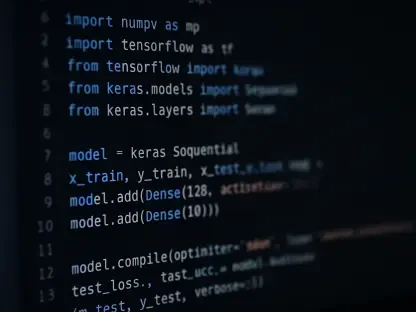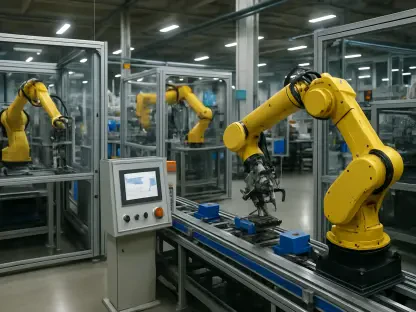In the fast-paced world of IT, where innovation drives success, a staggering 45% of organizations report a critical barrier to achieving automation: a profound lack of CI/CD skills among employees, which significantly slows progress and impacts competitiveness. Continuous Integration and Continuous Delivery (CI/CD) have become cornerstones of modern DevOps practices, promising faster software releases and enhanced quality. Yet, as firms race to adopt these methodologies, the shortage of expertise looms as a significant obstacle. This industry report delves into the rising importance of CI/CD, the challenges posed by the skills gap, cultural hurdles, and actionable strategies to bridge this divide, offering a comprehensive look at the state of DevOps automation in 2025.
The Rising Importance of CI/CD in Modern IT
Why CI/CD is a Top Priority
CI/CD has emerged as a linchpin for IT firms seeking to streamline operations and maintain a competitive edge in an increasingly digital landscape. By automating the integration and delivery of code, these practices drastically reduce time-to-market, allowing companies to respond swiftly to customer demands. Beyond speed, CI/CD improves code quality through consistent testing, minimizes human errors, and cuts operational costs by reducing manual intervention.
The significance of CI/CD is underscored by industry data, with 52% of professionals identifying it as a primary focus for open-source software applications this year. This figure outpaces other pressing areas such as artificial intelligence at 41% and cybersecurity at 36%. The prioritization reflects a broader recognition that automation through CI/CD is not just a technical upgrade but a strategic imperative for business growth.
This trend highlights a shift in IT priorities, where the ability to deploy reliable software continuously is seen as foundational to innovation. As organizations grapple with complex digital transformations, CI/CD stands out as a critical driver, enabling firms to scale operations efficiently while meeting the ever-evolving expectations of the market.
The Competitive Edge of Automation
Automation through CI/CD offers a distinct advantage by transforming the software development lifecycle into a seamless, efficient process. It enables teams to deliver updates and new features at an unprecedented pace, ensuring that businesses remain agile in dynamic markets. This speed directly correlates with improved customer satisfaction and retention, as firms can address user needs almost in real time.
Moreover, the impact of CI/CD extends to tangible business outcomes, such as increased revenue and market share. Companies that master these practices often position themselves as industry leaders, outpacing competitors who struggle with slower, manual processes. In the context of DevOps, CI/CD is not merely a tool but a fundamental component that integrates development and operations for optimal performance.
The competitive edge gained through automation also fosters innovation, as teams are freed from repetitive tasks to focus on creative problem-solving. This shift allows IT firms to experiment with new ideas and technologies, further solidifying their standing in a crowded marketplace. As a result, CI/CD has become synonymous with strategic success in the modern IT ecosystem.
The Core Challenge: A Widening Skills Gap
Evidence of the Skills Shortage
Despite the clear benefits of CI/CD, a significant hurdle stands in the way of widespread adoption: a pronounced shortage of skilled personnel. Research reveals that 45% of organizations pinpoint a lack of employee expertise as the primary barrier to implementing CI/CD, surpassing technical challenges like complex configurations at 39% and system updates at 35%. This gap directly undermines efforts to achieve full automation.
The implications of this shortage are far-reaching, as firms struggle to deploy CI/CD pipelines effectively without the necessary know-how. Projects face delays, errors persist due to improper setups, and the anticipated cost savings from automation remain elusive. This skills deficit creates a bottleneck, preventing organizations from realizing the full potential of their DevOps initiatives.
Addressing this issue requires more than just technical solutions; it demands a strategic focus on workforce development. As automation becomes integral to IT operations, the inability to cultivate CI/CD expertise threatens to widen the divide between ambition and execution, stalling progress across the industry.
Disparities Across Organizational Size
The skills gap manifests differently depending on the size of an organization, with larger firms facing more acute challenges. Data indicates that 50% of companies with over 5,000 employees report competency shortages in CI/CD, compared to just 34% of startups. This disparity stems from the structural complexities inherent in bigger entities, where scaling automation is often a daunting task.
In large organizations, cultural and organizational intricacies exacerbate the problem. Traditional silos between departments hinder collaboration, making it difficult to integrate teams such as developers, testers, and administrators. Additionally, decision-making processes tend to be slower, further complicating the adoption of agile CI/CD practices compared to the nimbler environments of smaller firms.
These differences highlight the need for tailored approaches to skill development. While startups may benefit from rapid, focused training, larger companies must address entrenched practices and foster cross-functional teamwork. Understanding these variations is crucial for devising effective strategies to mitigate the skills gap across the IT sector.
Beyond Technical Barriers: Cultural and Organizational Hurdles
The journey toward CI/CD adoption is not solely a technical endeavor; it is equally shaped by cultural and organizational challenges. Resistance to change is a common issue, particularly in larger firms where established workflows and mindsets dominate. Employees may be hesitant to embrace new tools and processes, viewing them as disruptions rather than improvements.
Slow decision-making further compounds these difficulties, as bureaucratic structures delay the implementation of CI/CD initiatives. Tomasz Dziedzic, CTO of Linux Polska, emphasizes that the obstacles are dual in nature, blending technical complexities with organizational inertia. Without addressing both dimensions, firms risk stalling their automation efforts indefinitely.
Collaboration emerges as a vital solution to these non-technical barriers. Breaking down barriers between developers, testers, and administrators is essential for creating a unified approach to CI/CD. Fostering an environment where teams share goals and responsibilities can help overcome resistance, paving the way for smoother integration of automation practices into daily operations.
Strategies to Bridge the Skills Gap
To tackle the pervasive skills shortage, companies are prioritizing internal development over external solutions. A notable 66% of organizations plan to upskill their existing workforce this year, far outstripping the 21% who intend to hire new specialists or the 13% considering consultants. This focus on training reflects a commitment to building long-term capacity within teams.
However, technical training alone is insufficient for sustainable progress. Kamil Kwiatkowski from Linux Polska stresses the importance of pairing skill enhancement with cultural transformation. Employees must be equipped not only with CI/CD knowledge but also with the adaptability and communication skills needed to navigate evolving workflows and team dynamics.
This holistic approach underscores the necessity of blending hard and soft skills in workforce development programs. Organizations that invest in comprehensive training, addressing both technical expertise and organizational readiness, are better positioned to implement CI/CD successfully. Such strategies ensure that automation efforts are supported by a capable and cohesive team, ready to drive change.
The Future of CI/CD and DevOps Automation
Addressing the skills gap holds the key to unlocking the full potential of CI/CD within IT firms. As training programs evolve, emerging methodologies such as immersive learning and simulation-based exercises are gaining traction, offering hands-on experience in a controlled environment. These innovations could accelerate skill acquisition, preparing teams for real-world challenges.
Cultural shifts are also on the horizon, with a growing emphasis on fostering agility and collaboration across organizations. Technological advancements, including AI-driven automation tools, may further simplify CI/CD implementation by reducing the complexity of configurations. Together, these trends signal a future where barriers to adoption are progressively dismantled.
Market dynamics and global workforce trends will continue to influence this landscape. As remote work and distributed teams become the norm, access to diverse talent pools could help alleviate shortages. Combined with strategic investments in education and technology, these factors offer a promising outlook for achieving widespread DevOps automation in the coming years.
Conclusion: A Holistic Path Forward
Looking back, this report illuminated the pivotal role of CI/CD in driving DevOps automation while exposing the substantial barrier posed by a persistent skills gap. It became evident that larger organizations struggled more acutely with competency shortages and cultural resistance, which slowed their progress compared to smaller, agile firms. The analysis also highlighted a clear industry preference for upskilling existing staff as a primary remedy.
Moving forward, IT firms should commit to a balanced strategy that integrates robust technical training with meaningful cultural change. Establishing mentorship programs and cross-departmental initiatives could further enhance collaboration, breaking down silos that hinder CI/CD adoption. By prioritizing both skills and adaptability, companies can transform this hidden brake into a powerful accelerator for innovation.
Additionally, staying attuned to emerging tools and global talent trends will be crucial for sustaining momentum. Partnerships with educational institutions and technology providers could offer fresh avenues for skill development. With focused effort and a comprehensive approach, the industry stands poised to overcome these challenges and fully harness the transformative power of automation.








